Learn Solar Eclipse Viewing Basics
Table of Contents
Key Points
- NEVER view the sun with the naked eye for any length of time, as doing so may cause irreversible eye damage or blindness.
- ONLY totality is viewable with the naked eye, all other phases of the eclipse should not be viewed with the naked eye.
- When viewing a solar eclipse, use two pieces of cardboard and make a small hole in one piece and project an image of the sun onto the other.
- During a total solar eclipse, the moon completely covers the sun, making it safe to view with the naked eye.
- You can expect to see Baileys Beads, Diamond Ring, and the sun‘s corona during totality.
- Totality can last up to 7 minutes and 40 seconds, but is generally much shorter. 7. As soon as the sun begins to come back into view, naked eye viewing must cease.
Safety Information
Before attempting to view a solar eclipse:
NEVER view the sun with the naked eye for any length of time, as doing so may cause irreversible eye damage or even blindness. Solar filters and solar glasses are not made to any officially recognised safety standard in all countries, and the use of these items is at your own risk. (I use a solar filter and have had no problems with it. I recommend if you do wish to buy a solar filter that you buy one only from a reputable telescope store). ONLY totality is viewable with the naked eye, all other phases of the eclipse should not be viewed with the naked eye for the reasons outlined above. For safe viewing of a solar eclipse follow the guidelines below:
- Buy two pieces of cardboard and make a small hole in one piece.
- Put the piece of cardboard without the hole on a stand.
- With your back to the sun, hold up the piece of cardboard with the hole in it so that it projects an image of the sun onto the other piece of cardboard.
Read more safety information here
What is a solar eclipse and what can I expect to see?
A solar eclipse occurs when an object passes between an observer and the sun. On Earth, the moon passing between an observer and the sun is the most interesting eclipse event. On Saturn, it may be that Jupiter passing between an observer and the sun is the most interesting eclipse event.
The moon and the sun are of similar apparent size when viewed from Earth, thus it is possible for the moon to completely cover the sun, and when this occurs it is known as a total solar eclipse. Due to the moons elliptical orbit a total solar eclipse does not occur every time the moon passes between an observer and the sun. If the moon is near the furthest point of its orbit from Earth, then the moon is not large enough to completely cover the sun, and thus an annular eclipse occurs, where only an annulus of sunlight is visible. If the observer is not aligned correctly with the moon and the sun, then only a partial eclipse is visible, where the whole of the moon does not cover the sun at any point during the eclipse.
If the moon is near the Earth in its orbit and the observer is correctly aligned with the moon and the sun, then a total solar eclipse will be visible. Below is a list of what you can expect to see in the moments prior to totality as well as during totality:
- Baileys Beads – Where the photosphere of the sun is covered by the moon but is still visible through valleys and craters of the moon.
- Diamond Ring – Where the photosphere is visible only through the deepest valleys and craters of the moon. It is so named because it appears as if there is a large diamond ring in the sky, with the diamond reflecting sunlight.
- Totality – Where the moon completely covers the sun. It is now safe to view the eclipse with the naked eye, as the eclipse is now about as bright as a full moon. The suns corona becomes visible and appears pale blueish-white. Prominences and solar flares may also be visible, and appear royal red in colour. Totality can last up to 7 minutes and 40 seconds but is generally much shorter. As soon as the sun begins to come back into view naked eye viewing must cease.
Total Solar Eclipse 2002, South Australia
I was in South Australia to view the December 4th solar eclipse in 2002. I decided not to head for Ceduna on the coast of South Australia, as the cloud cover was a real problem. I opted instead to head into the Outback where the chance of cloud was slim to none.
The horizon on the centreline was probably the best horizon you could find for such an event. Flat as a pancake from horizon to horizon, which was perfect as the sun was only 6 degrees above the horizon at totality. The wind was gale force during the day and dropped only slightly in intensity during the eclipse, however, this had no effect on naked-eye viewing.
It took one hour from the first contact to totality, and during this time one large sunspot was visible. 5-10 minutes prior to totality the heat from the sun had decreased noticeably, however, the sun was just as bright. The shadows of vehicles and people were beginning to lengthen, and it seemed like sunset was approaching, but the sun was still 6 degrees above the horizon! In the seconds before totality, the shadows began to lengthen quickly and were suddenly gone as the moon’s shadow raced across the outback at a ground speed of 27 000 kilometres an hour. Everyone looked up in awe as the sun suddenly went out, and a ghostly blue-white corona appeared out of nowhere. It was a truly awe-inspiring sight. On the lower left limb of the sun, a few flares were visible and appeared royal red. (They looked fantastic through my camera lens).
30 seconds later it was all over, the sunlight began to appear through the deeper valleys of the surface of the moon. The diamond ring effect was short-lived, and all too soon solar filters were placed back onto cameras and telescopes. But it was worth travelling halfway across Australia to view a 30 seconds event.
I hope you all get to view this amazing event some time in the future but remember the safety tips.
FAQ
What is a solar eclipse?
A solar eclipse is an event in which the Moon passes between the Earth and the Sun, obstructing the Sun‘s light from reaching the Earth and casting a shadow on the Earth‘s surface.
How can I safely view a solar eclipse?
It is not safe to look directly at the Sun during a solar eclipse. To safely view a solar eclipse, you will need to use special eclipse glasses, which are available for purchase online or at specialty stores.
What should I wear when viewing a solar eclipse?
You should dress for the weather and wear comfortable, protective clothing, such as long pants and a long-sleeved shirt.
What other safety precautions should I take when viewing a solar eclipse?
The American Astronomical Society recommends that you never use binoculars, telescopes, or any other magnifying lenses when viewing a solar eclipse. Additionally, you should never look at the Sun through an unfiltered camera, telescope, binoculars, or any other optical device.
I have a BS in Information Sciences from UW-Milwaukee. I’ve helped manage Physics Forums for over 22 years. I enjoy learning and discussing new scientific developments. STEM communication and policy are big interests as well. Currently a Sr. SEO Specialist at Shopify and writer at importsem.com

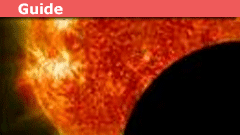


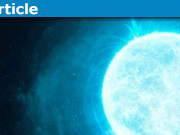
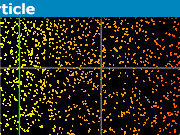
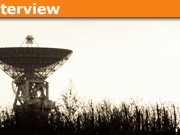
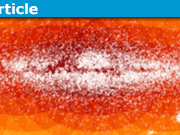
Leave a Reply
Want to join the discussion?Feel free to contribute!